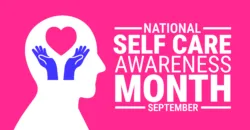Risk Factors and Protective Factors for Mental Health Disorders

Mental health disorders are complex. People with similar conditions may experience their symptoms differently, and these symptoms can impact their lives to varying degrees.
According to the National Institute of Mental Health, one in five adults in the United States has a mental health disorder. Still, there is no easy way to determine whether an individual will develop a mental health disorder. There are biological, social, and cultural factors that can contribute to or mitigate the onset of symptoms. There are also preventative factors, or events that may counteract risk factors. Learn more about preventative and risk factors for mental health disorders.
Mental Health Risk Factors
A risk factor is a condition or variable that makes a person more susceptible to developing a mental health condition. It can be biological (genetics, injuries or illnesses) or psychosocial (stress, trauma or socio-demographic) in nature.
Examples of risk factors include:
- A family history of mental health disorders
- Traumatic experiences
- Alcohol or drug abuse
- Poor diet and inadequate nutrition
- Ongoing sleep problems
- Low self-esteem or perception of inherent unworthiness
- Isolation or lack of a support network
- Poverty
Protective Factors
While the risk factors for mental health make it more likely that a person develops a disorder, preventative or protective factors have the opposite effect. These factors improve a person’s ability to respond to stressful situations or circumstances. They counteract risk factors, at least to some degree.
Examples of protective factors include:
- High self-esteem
- Strong social and family support
- Connection to religion, culture, or community
- Financial security
- Educational opportunities
- Healthy lifestyle choices
- Access to support services
The Role of Determinants in Mental Health
Determinants for mental health are cumulative, meaning they add up over time. Research suggests that it is likely multiple determinants that determine a person’s vulnerability to mental health disorders.
- Individual: Individual behaviors and attributes refer to a person’s innate characteristics and learned behaviors that affect an individual’s response to daily events, circumstances and stressors.
- Socioeconomic: Economic determinants begin at birth and continue into adulthood. Financial security in early life can have a significant impact throughout your adult years, even if your financial circumstances change in adulthood. Similarly, education can play a significant role in mental health risks and preventative measures.
- Environmental: Environmental and sociocultural characteristics play a significant role in mental health. These factors can influence access to necessities, such as healthy food and clean water. They also contribute to feelings of vulnerability, security or insecurity, cultural identity and more.
- Social: Social factors that influence a person’s mental health include social interaction with peers, parental involvement or neglect and parenting styles, all of which can affect mental health risk.
Treatment and Early Intervention
Risk factors and protective factors usually occur in multiple contexts or settings, including the ones outlined above. In addition, our understanding of risk and protective factors is important for early intervention and prevention of mental health disorders. To reduce negative outcomes, we must address risk across all domains of life. Examples include interventions ranging from early childhood programs that teach emotional resilience to community neighborhood gardens that reduce social isolation.
It is important for mental health professionals, social workers, educators and other stakeholders to recognize the role that such determinants have when designing treatment interventions.
Because mental health disorders are so complex, a multidisciplinary approach to treatment is often required. This can include psychotherapy, support groups, lifestyle and nutritional education, life skills training and medication.
Pyramid Healthcare helps individuals improve their mental well-being and manage symptoms of mental health disorders. Services for adults and adolescents are available at our dual diagnosis and outpatient treatment centers. Our staff can help design a treatment plan that is specific to your goals.
Mental health disorders are complex. People with similar conditions may experience their symptoms differently, and these symptoms can impact their lives to varying degrees.
According to the National Institute of Mental Health, one in five adults in the United States has a mental health disorder. Still, there is no easy way to determine whether an individual will develop a mental health disorder. There are biological, social, and cultural factors that can contribute to or mitigate the onset of symptoms. There are also preventative factors, or events that may counteract risk factors. Learn more about preventative and risk factors for mental health disorders.
Mental Health Risk Factors
A risk factor is a condition or variable that makes a person more susceptible to developing a mental health condition. It can be biological (genetics, injuries or illnesses) or psychosocial (stress, trauma or socio-demographic) in nature.
Examples of risk factors include:
- A family history of mental health disorders
- Traumatic experiences
- Alcohol or drug abuse
- Poor diet and inadequate nutrition
- Ongoing sleep problems
- Low self-esteem or perception of inherent unworthiness
- Isolation or lack of a support network
- Poverty
Protective Factors
While the risk factors for mental health make it more likely that a person develops a disorder, preventative or protective factors have the opposite effect. These factors improve a person’s ability to respond to stressful situations or circumstances. They counteract risk factors, at least to some degree.
Examples of protective factors include:
- High self-esteem
- Strong social and family support
- Connection to religion, culture, or community
- Financial security
- Educational opportunities
- Healthy lifestyle choices
- Access to support services
The Role of Determinants in Mental Health
Determinants for mental health are cumulative, meaning they add up over time. Research suggests that it is likely multiple determinants that determine a person’s vulnerability to mental health disorders.
- Individual: Individual behaviors and attributes refer to a person’s innate characteristics and learned behaviors that affect an individual’s response to daily events, circumstances and stressors.
- Socioeconomic: Economic determinants begin at birth and continue into adulthood. Financial security in early life can have a significant impact throughout your adult years, even if your financial circumstances change in adulthood. Similarly, education can play a significant role in mental health risks and preventative measures.
- Environmental: Environmental and sociocultural characteristics play a significant role in mental health. These factors can influence access to necessities, such as healthy food and clean water. They also contribute to feelings of vulnerability, security or insecurity, cultural identity and more.
- Social: Social factors that influence a person’s mental health include social interaction with peers, parental involvement or neglect and parenting styles, all of which can affect mental health risk.
Treatment and Early Intervention
Risk factors and protective factors usually occur in multiple contexts or settings, including the ones outlined above. In addition, our understanding of risk and protective factors is important for early intervention and prevention of mental health disorders. To reduce negative outcomes, we must address risk across all domains of life. Examples include interventions ranging from early childhood programs that teach emotional resilience to community neighborhood gardens that reduce social isolation.
It is important for mental health professionals, social workers, educators and other stakeholders to recognize the role that such determinants have when designing treatment interventions.
Because mental health disorders are so complex, a multidisciplinary approach to treatment is often required. This can include psychotherapy, support groups, lifestyle and nutritional education, life skills training and medication.
Pyramid Healthcare helps individuals improve their mental well-being and manage symptoms of mental health disorders. Services for adults and adolescents are available at our dual diagnosis and outpatient treatment centers. Our staff can help design a treatment plan that is specific to your goals.







